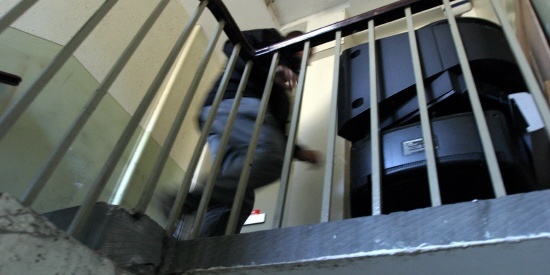The number of heroin dealers being caught by police in Tayside is falling annually, according to figures obtained by The Courier.
Our investigation reveals that while 407 suppliers were detected in 2008, and 380 in 2009, this fell to just 256 last year.
The figures have led senior officers to assure communities that tackling the misery wreaked by the class A drug remains a top priority.
Chief Superintendent Craig Suttie, head of the crime intelligence division at Tayside Police, has appealed for the help of the public in ensuring those responsible for bringing the drug to the area are caught, insisting that “heroin ruins lives.”
The decline is perhaps most notable in Dundee, a city whose destructive relationship with heroin is all too well documented. It has an estimated 3% of the adult population dependent on the substance.
In 2008, 214 people were detected for supplying heroin or being in possession with intent to supply across the city, compared with 185 in 2009 and 134 last year.
The drug is frequently trafficked into Dundee from Liverpool by dealers on the “scally run”. The force has had to launch specialist operations in partnership with Merseyside Police in an attempt to curb the problem.
However, police officials were keen to point out that minor alterations to the way crime figures are recorded nationally could have had an effect on the statistics.
Many officers in the city also believe that Operation Waterloo, launched in 2008 to drive down drug dealing in the Hilltown and Stobswell areas, could have contributed to an increased number of detections at certain points.
Chief Superintendent Suttie said, “Drug misuse harms our communities and the families within them because it can give rise to other crime, such as housebreaking, robbery, street crime and prostitution.
“People can be assured that we continue our unrelenting focus on the illegal trade of class A drugs to try to prevent them from reaching the streets of Tayside, to remove dealers from our neighbourhoods and to bring offenders to justice.
“At the same time we need the people of Tayside to share our determination in tackling this issue and to provide us with information. We want to know about any drugs activity in their area and for people to tell us about any suspicions they have. We can make a difference by working together.”
In Angus, 93 individuals were detected in 2008, 63 in 2009 and 68 in 2010. In Perth and Kinross, the figure was 100 in 2008, 132 in 2009 and 54 in 2010.
Also, hundreds of people in the force area were caught in possession of the drug over the period and officers investigated 128 drugs-related deaths 91 of which were at least partially attributable to heroin misuse.
Gareth Balmer, who works at the Dundee base of national drugs and alcohol support charity Addaction, said the organisation had worked with around 400 drug users in 2010 alone, around three-quarters of whom had problems with heroin.
He said, “In terms of the extent of the problem, I think these figures are just the tip of the iceberg. Dundee has some of the highest levels of drug use in Scotland and I don’t think people realise how dangerous heroin can be.”
